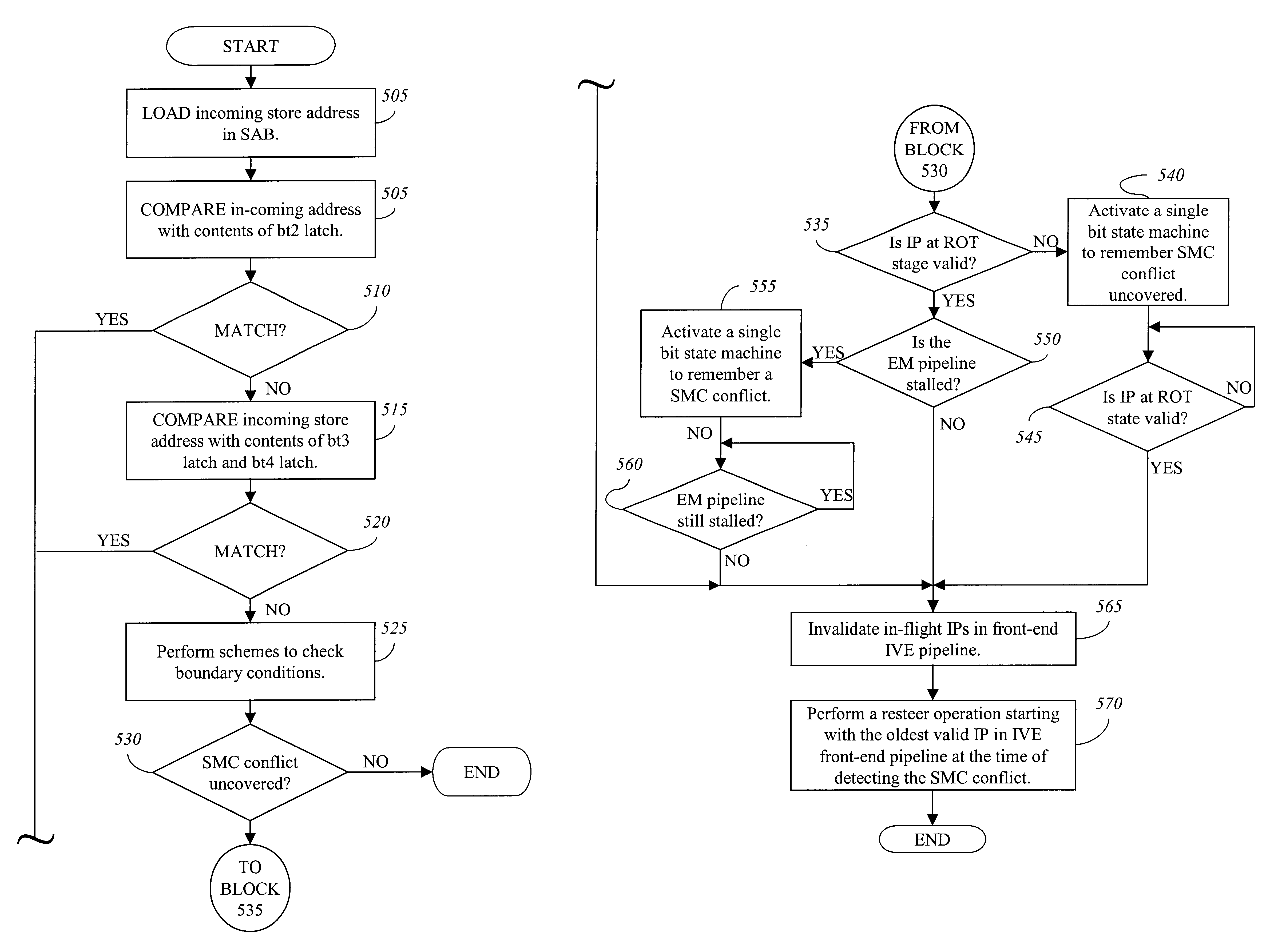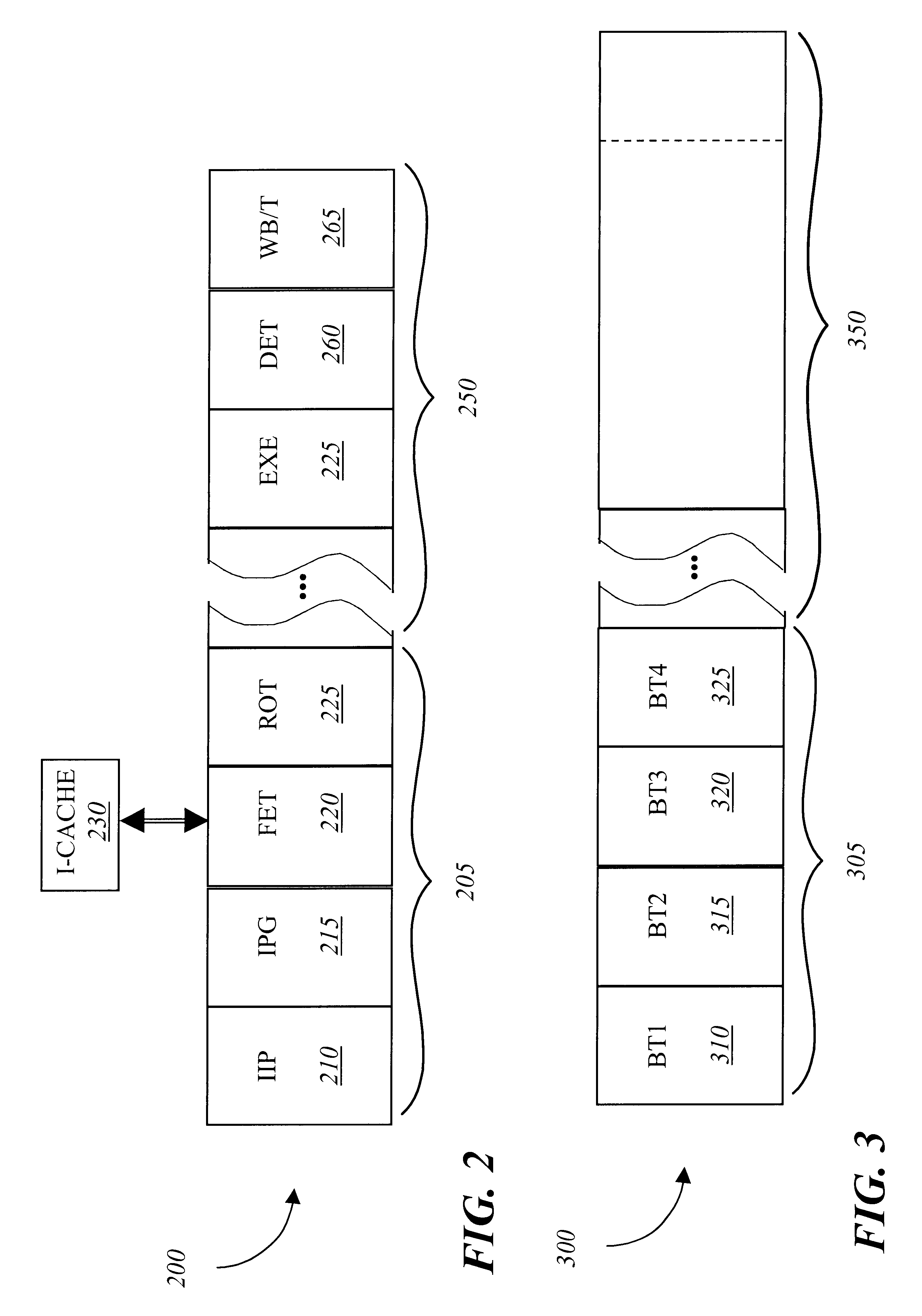Apparatus and method for detecting and handling self-modifying code conflicts in an instruction fetch pipeline
an instruction fetch and code conflict technology, applied in the direction of program control, computation using denominational number representation, instruments, etc., can solve the problems of in-flight ips being subject to self-modifying code (smc) conflicts, execution of "stale" data, and possible smc conflicts
- Summary
- Abstract
- Description
- Claims
- Application Information
AI Technical Summary
Problems solved by technology
Method used
Image
Examples
Embodiment Construction
Embodiments of a system and method for detecting and handling self-modifying code (SMC) conflicts in an instruction fetch pipeline are described. In one embodiment, detection is accomplished by receiving a store address from circuitry responsible for instruction execution, and comparing the store address to information progressing through the front-end pipeline. Due to system latency, the store address is compared with in-flight instruction pointers (IPs) in the front-end pipeline and with the contents of a storage unit referred to as a "store address buffer" (SAB) described below. Herein, in this embodiment, the "front-end pipeline" includes the first few processing stages (e.g., the first four processing stages "bt1-bt4"), although different processing stages may be used.
Herein, a number of terms are frequently used to describe various hardware and functionality. For example, "information" includes data, validity, address, control or any combination thereof. In this embodiment, th...
PUM
 Login to View More
Login to View More Abstract
Description
Claims
Application Information
 Login to View More
Login to View More - R&D
- Intellectual Property
- Life Sciences
- Materials
- Tech Scout
- Unparalleled Data Quality
- Higher Quality Content
- 60% Fewer Hallucinations
Browse by: Latest US Patents, China's latest patents, Technical Efficacy Thesaurus, Application Domain, Technology Topic, Popular Technical Reports.
© 2025 PatSnap. All rights reserved.Legal|Privacy policy|Modern Slavery Act Transparency Statement|Sitemap|About US| Contact US: help@patsnap.com



